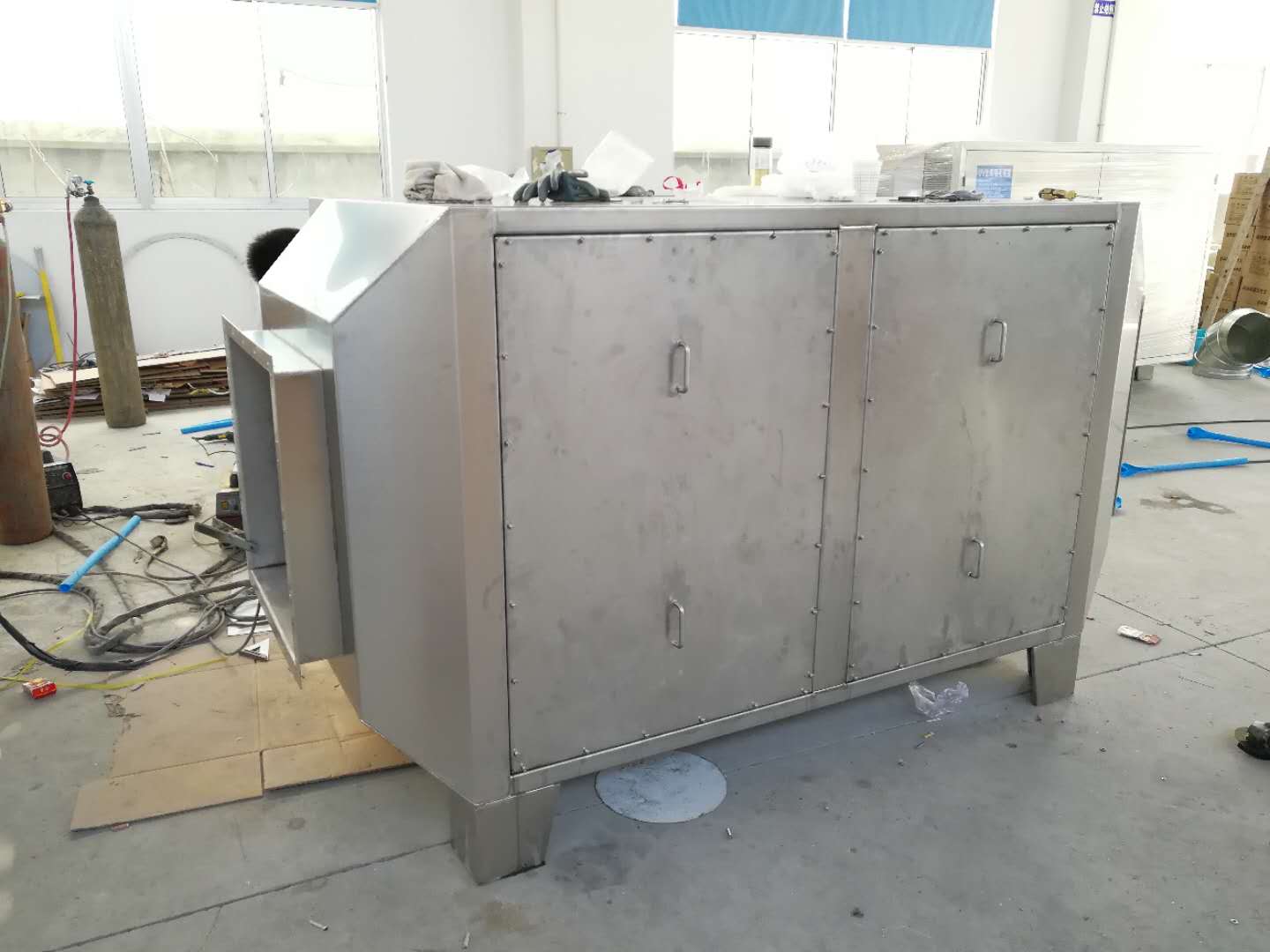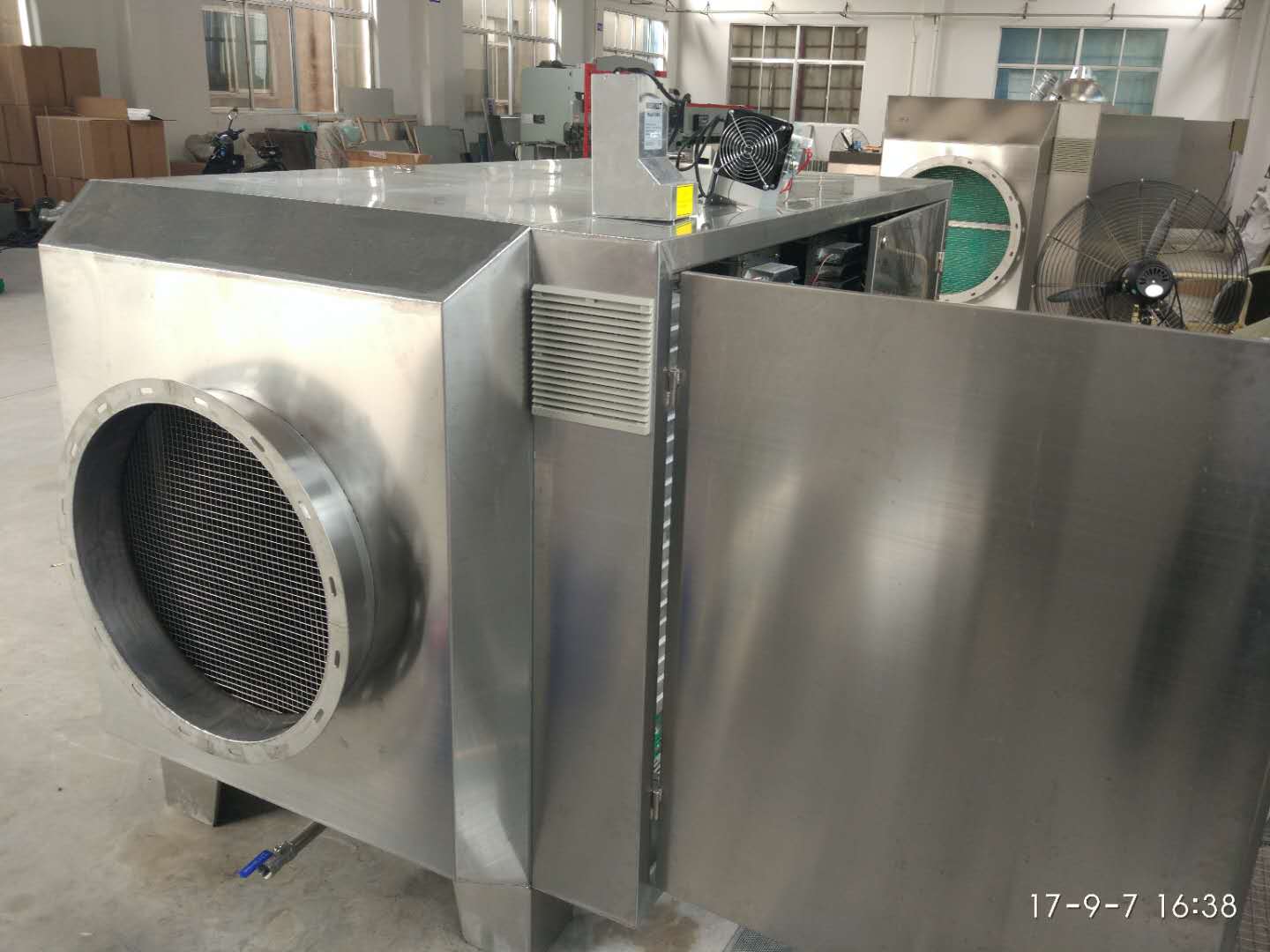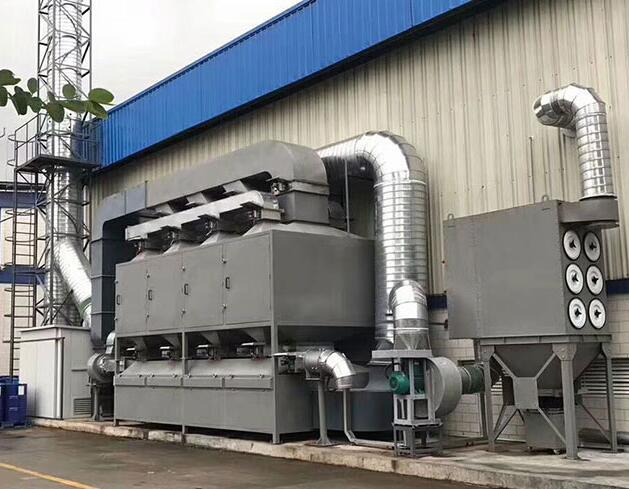I. Sources of Waste Gas from Chemical Plant
Chemical plants produce a large number of toxic and harmful gases in the production process, which are divided into organic and inorganic exhaust gases. There are many kinds of chemical waste gas pollution, the physical and chemical properties are very complex, and the toxicity is different. The toxic substances in chemical waste gas are divided into acid-base waste gas, organic waste gas or mixed gas.
The odor of chemical waste gas does great harm to human body. It not only pollutes the surrounding environment, but also does great harm to the physical examination of chemical factory employees and residents.
II. Composition and Classification of Waste Gas from Chemical Plant
The chemical waste gases produced by different chemical industries vary greatly, such as chlorine, hydrogen chloride, vinyl chloride, mercury, acetylene and so on. The nitrogen fertilizer industry mainly contains nitrogen oxides, urea dust, carbon monoxide, ammonia, sulfur dioxide, methane and so on.
According to the existing form of pollutants, chemical waste gas can be divided into particulate pollutants and gaseous pollutants. Particle pollutants include dust, dust, smoke, mist, coal dust, etc. Gaseous pollutants include sulfur compounds, chlorinated compounds, carbon oxides, hydrocarbons, halogens, etc.
According to the relationship with pollution source, it can be divided into primary pollutant and secondary pollutant. The original substance discharged directly from the pollution source of a chemical plant has no change in its nature after entering the atmosphere, which is called primary pollutant. If a primary pollutant reacts with the original components of the atmosphere, a new pollutant with different properties from the original pollutant is called secondary pollutant.
III. Characteristics of Chemical Plant Exhaust Gas
2. Most emissions are irritating or corrosive. Gases such as sulphur dioxide, nitrogen oxides, chlorine and hydrogen
fluoride are irritating or corrosive, especially sulphur dioxide, which
directly impairs human health, corrodes the surfaces of metals,
buildings and sculptures, and easily oxidizes to sulphate and falls to
the ground, polluting soil, forests, rivers and lakes.
3. There are many kinds of planktonic particles in the exhaust gas, which are harmful. The plankton particles excluded from chemical production include dust,
smoke, acid mist, etc. There are many kinds of them, which are harmful
to the environment. Particularly when plankton particles and harmful gases exist at the
same time, they can produce synergistic effect, which is more harmful to
human beings.
IV. Chemical Waste Gas Treatment Process
First, acid and alkali waste gas is suitable to use "spraying tower" process.
2. Organic exhaust gas is suitable to adopt the process of "dry high-efficiency filtration + activated carbon adsorption concentration + catalytic combustion" (depending on the specific composition and concentration).
3. Mixed gases are treated by "spraying washing pretreatment + dry high-efficiency filtration + activated carbon adsorption concentration + catalytic combustion" process.
Process description: The mixture gas of the two is first added into the spray scrubbing tower, and the acid (alkali) gas in the waste gas is removed according to acid-base neutralization reaction. The PH value of the solution is automatically controlled according to the PH value of the solution. Some water-soluble substances and particulate matter in waste gas are pretreated and purified; gas phase substances are converted into liquid phase substances; efficient swirling plates are installed inside the spray scrubber, which effectively contacts the gas with circulating water and removes particulate matter in waste gas; screen demister is installed on the upper part of the spray tower to effectively remove water mist generated by the spray scrubber, etc.
After washing, a small amount of water mist and water vapor will be mixed in the gas, which needs to be removed before it can enter the activated carbon adsorption device.
Waste gas after spraying and washing contains a small amount of water mist and water vapor. If it enters the activated carbon adsorption system directly, the gap of activated carbon will be blocked, resulting in the reduction of adsorption efficiency and even failure. At the same time, because of the long service life of activated carbon (in the case of analytical equipment), in order to ensure the adsorption effect of activated carbon, filter is usually used before the exhaust gas enters the activated carbon adsorption bed. Dust and viscous substances are removed by the filter. The filter usually adopts two stages: the first stage: filtration precision G3, and the second stage: filtration precision G4 to ensure that the exhaust gas entering activated carbon is relatively clean. The filter is used to capture the dust in the exhaust gas. If the dust enters the concentrated adsorber directly, the capillary of the adsorbing material will be blocked and the adsorption performance will be reduced. The filter adopts the type of initial effect + bag type medium effect filtration, which will be maintained in the design for easy disassembly and installation. Pressure difference switch represents pressure loss in real time. According to the set pressure, alarm signal is sent to PLC when the pressure difference exceeds a certain value, so that the user can change the filter material in time.
After the adsorption of honeycomb activated carbon is saturated, the saturated activated carbon bed and the activated carbon bed to be used after desorption are switched alternately according to the automatic control program of PLC. The hot air is fed into the activated carbon bed by the air blower to make the carbon layer warm. The organic matter is desorbed from the activated carbon. The desorbed waste gas belongs to the organic waste gas with high concentration, low air volume and high temperature.
The organic waste gases with high concentration, low air volume and high temperature desorbed by activated carbon are filtered by fire-proof dust collector and then enter a special plate heat exchanger to exchange energy with the high temperature gases after catalytic reaction. At this time, the temperature of the exhaust gas source is raised for the first time, and the gases with certain temperature enter the preheater for the second time, and then enter the first stage of catalytic reaction. At this time, the organic exhaust gas is partially decomposed at low temperature and releases energy. The exhaust gas source is directly heated to raise the gas temperature to the optimum temperature of catalytic reaction. The temperature meets the temperature requirement of catalytic reaction and enters the catalytic combustion chamber. The organic gas is thoroughly decomposed and releases a lot of heat at the same time. The exchanger converts the heat energy to the cold air flow, and the air is exhausted by the induced draft fan after cooling.
1. Alkali Washing Tower + Activated Carbon Adsorption Equipment + Fan
2. Washing Tower + Photo-Oxygen Catalytic Equipment + Fan
3. Spray Tower + Low Temperature Plasma Equipment + Fan
4. Washing Tower + Photoionization Composite Equipment + Fan
5. Activated Carbon Adsorption and Desorption + Catalytic Combustion Waste Gas Treatment Equipment
Different emission situations and different exhaust gases have different technological processes. Fifteen years of experience in waste gas treatment in Huaene environmental protection, field investigation, free scheme design according to site conditions, a telephone to help you solve the problem of waste gas treatment in an all-round way, no longer bothered by EIA!
 Huaxi EP
Huaxi EP









 Mobile access
Mobile access